I want to get the coordinates of the equally distanced n points on a circle in R.
Mathematically the solution is: exp((2*pi * i)*(k/n)) where 0 <= k < n
There are many SOF questions to handle this problem. All the solutions are in non-R environments:
Evenly distributing n points on a sphere (java, python solutions presented)
Generating points on a circle (non-R solution)
calculate pixel coordinates for 8 equidistant points on a circle (python solution)
drawing points evenly distributed on a circle (non-R solution)
How to plot points around a circle in R (no equally distancing)
Coordinates of every point on a circle's circumference (non-R solution)
Coordinates of points dividing circle into n equal halves in Pebble
How to efficiently draw exactly N points on screen? (python solution)
Approximate position on circle for n points (non-R solution)
Determining Vector points on a circle
What I did for solution:
# For 4 points, 0<=k<4
exp((2*pi*sqrt(-1))*(0/4)); exp((2*pi*sqrt(-1))*(1/4)); exp((2*pi*sqrt(-1))*(2/4)); exp((2*pi*sqrt(-1))*(3/4))
Complex number i is not defined in R. There is no such constant as opposite to pi (3.14). The trick sqrt(-1) to similate i does not work; the error:
[1] NaN
Warning message: In sqrt(-1) : NaNs produced


